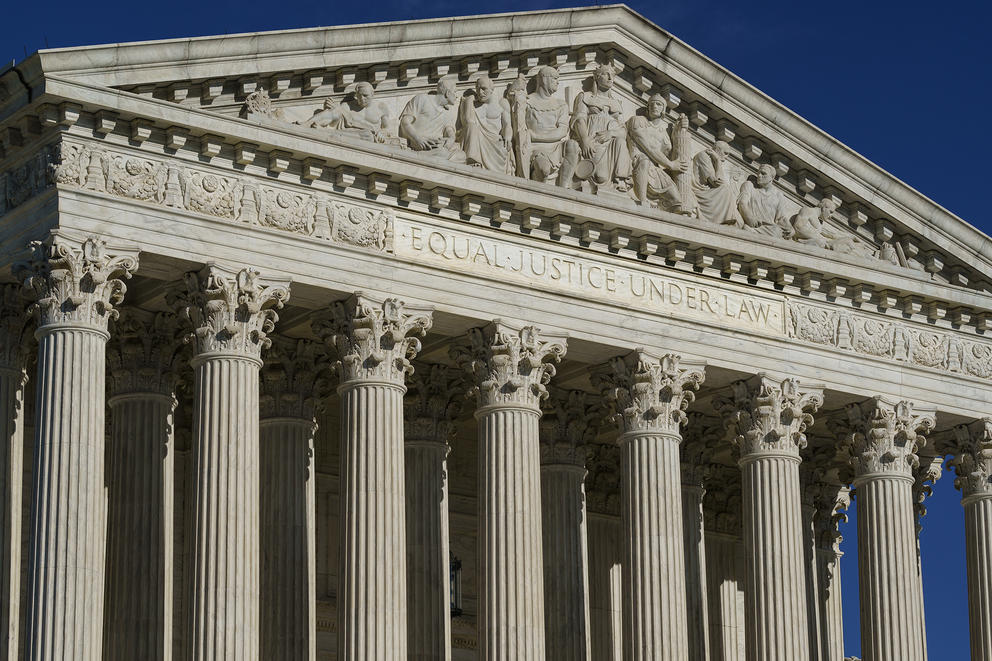Matt Barreto, a UCLA professor of political science and Chicana/o studies, said that’s because none of the proposals would create a legislative district in the Yakima Valley where the majority of eligible voters are Latino.
Barreto, faculty director of the UCLA Voting Rights Project and an expert on Latino voting patterns, said that’s a problem because the Yakima Valley has both a large Latino population and a well documented history of racially polarized voting, in which Latino voters consistently choose different candidates than white voters. Barreto reviewed the proposed redistricting maps in an analysis commissioned by state Senate Democrats.
“I think the safest thing to assume is you have a voting rights case to be made in the Yakima Valley region, and you must draw a map that would remedy an action, a complaint, a lawsuit,” Barreto told Crosscut this week.
The state Redistricting Commission consists of four voting members, one appointed by each political caucus of the Legislature. Last month, each member submitted separate plans for redrawing the state’s legislative districts.
But according to Barreto’s analysis, even the Democratic appointees’ maps would not create districts in the Yakima Valley that clearly comply with federal voting rights law.
With recent demographic changes, there are now three counties in the region that are majority Latino, Barreto said. That makes it easily possible to draw a legislative district where Latinos make up at least 50.1% of those eligible to vote, he said.
Given those facts, a federal judge would most likely conclude that such a district can and must be drawn, Barreto said. And, for the district to be in compliance, he said, Latinos would need to make up not just a majority of the overall population, but a majority of U.S. citizens over 18.
“It has to give Latinos a chance to say, ‘Hey, we’re the majority in this district, we get to elect candidates that we want, and not always be on the losing side,' " said Barreto, who previously spent 10 years on the faculty at the University of Washington.
“Latino voters have been on the losing side of state legislative elections for 25 years in the Yakima Valley." he added.
Yakima has been a hotbed for voting rights lawsuits in the past. In 2014, a federal judge ruled that the city of Yakima’s system of electing council members by citywide vote disadvantaged Latinos, leading the city to move to a new system of district-based elections.
Earlier this year, Yakima County settled a similar voting rights lawsuit, agreeing to switch to district-based voting in general elections. Both cases demonstrated clear patterns of racially polarized voting, Barreto noted.
Brady Walkinshaw, the Senate Democrats’ appointee to the Redistricting Commission, said he plans to submit a new redistricting plan for the Yakima area based on Barreto’s findings. According to Barreto’s analysis, Walkinshaw’s original proposal created a Yakima-area district that was only about 43% Latino by citizen voting age population, which Barreto said risks being out of compliance with the law.
“I think for me, as the first ever Latino commissioner, it has been extremely important for me to lift up and elevate Hispanic voters, and undo patterns of racially polarized voting, particularly in the Yakima Valley,” Walkinshaw told Crosscut.
“This is something that, under federal law, has to be done,” added Walkinshaw, who is the first Latino person to serve on the state Redistricting Commission.
The other Democratic appointee to the redistricting commission, April Sims, said she plans to submit a new map as well.
Sims originally proposed a Yakima-area legislative district where 47.6% of eligible voters would be Latino, according to Barreto’s analysis. That’s still short of the 50.1% or above standard normally called for by the courts, Barreto said.
The two Republican commissioners’ maps were even further off, according to Barreto’s analysis. He found that the two GOP commissioners, Joe Fain and Paul Graves, each proposed Yakima-area districts where just over one-third of eligible voters would be Latino. Neither Fain nor Graves responded to requests to comment on the newly released analysis.
Barreto said it appeared to him that the maps submitted by Fain and Graves engaged in textbook “cracking” of the Yakima Valley’s Latino population into three or four districts. Such a map would make it impossible for Latino voters to form a majority in any single district, limiting their ability to elect their preferred candidates, he said.
Based on recent election results, it’s likely those preferred candidates would be Democrats. Barreto’s analysis of precinct-level data found that Latino voters across five counties in Central and Eastern Washington overwhelmingly favored Democrats in the past decade, while white voters in the region most often picked Republican candidates.
Graves, one of the Republican redistricting commissioners, has said his goal in drawing new legislative districts is to make more of them competitive, so that there are fewer safe seats for Democrats or Republicans. Right now, Democrats hold strong majorities in both chambers of Washington’s Legislature.
At the same time, Graves has said he also worked to increase the number of legislative districts that are majority people of color. While Graves said the state’s last redistricting process created only two majority minority districts, he estimated his proposed map would create eight. One of those would be his proposed 15th Legislative District in the Yakima area, he told Crosscut last month.
Barreto’s analysis, however, found that while Graves’ proposed 15th District would be 54% Latino by overall population, when looking at eligible voters — U.S. citizens over 18 — only 36% would be Latino.
Barreto suggested two ways of redrawing Yakima-area districts to ensure compliance with the federal Voting Rights Act. One of his proposals, but not both, would place the Yakama Nation reservation in a single legislative district, something all four commissioners have said is a priority. Right now, the reservation is divided between districts, which Yakama tribal leaders have asked to change. Last month, each commissioner proposed a new map that would unite the Yakama reservation in one district.
But Barreto believes they would also need to create a Latino majority voting district to ensure that the results comply with the law.
Barreto, who has testified as an expert witness in voting rights cases across the country, has done polling and other work for Democratic candidates, including President Joe Biden. Yet he said creating a Yakima Valley district where most eligible voters are Latino wouldn’t be about giving an advantage to one party or the other.
“Latinos in this district could eventually decide to vote another way,” Barreto said. “... It doesn't matter who they vote for, it’s just that they cannot be overruled by rural white voters — which is what has been happening for 30 years.”
Updated to include additional reaction.






